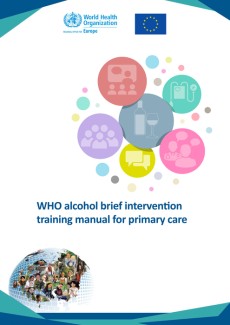Applying interventions designed to reduce and manage the symptoms of substance use disorders.
Treatment
Delivery of Screening and Brief Intervention for Unhealthy Alcohol Use in an Urban Academic Federally Qualified Health Center
Abstract Background Screening and brief intervention (SBI) for unhealthy drinking has not been widely implemented in primary care partly due to reliance on physicians to perform it. Methods We implemented a model of nursing staff-delivered...
Gambling Activates the Same Brain Pathways as Substance Addiction, New Study Finds
Problem gambling in the UK is reported to affect around 590,000 people. The condition can be treated via a range of approaches, including cognitive behavioural therapy and medication. Published in the journal Translational Psychiatry, a new...
Effectiveness Bank Matrix Bite: What Is Drug Addiction Treatment for?
The first matrix cell on treatment (as opposed to harm reduction) seems a good time to ask: What is treatment there to do? ‘Cure’ addiction, or promote meaningful and productive lives? Meet patients’ wishes, or aid the government’s welfare...
Effectiveness Bank Drug Treatment Matrix Row 1. First Task: Save Lives, Reduce Harm
Consolidates the lessons of the first five instalments of the online course on drug treatment research. The five cells in row 1 explored key research on reducing harm to the user as a result of their drug use. Prompted by HIV, from the...
Exercise in the Treatment of Youth Substance Use Disorders: Review and Recommendations
SUMMARY Substance use disorders are one of the most common and debilitating mental health conditions experienced by youth, and several well-established risk factors exist that contribute to the development and persistence of SUDs...
WHO Alcohol Brief Intervention Training Manual for Primary Care (2017)
Alcohol contributes significantly to the disease and mortality burden in the WHO European Region, and primary health care systems play an important role in reducing the impact of harmful alcohol use. Screening and brief interventions (SBIs)...

Do Creative Arts Therapies Reduce Substance Misuse? A Systematic Review
Abstract The complexities of substance misuse treatment indicate a need to consider the efficacy of creative arts therapies for those who find it difficult to verbalise their emotions and feelings. The focus of this systematic review is to...
Factors Influencing the Long-Term Sustainment of Quality Improvements Made in Addiction Treatment Facilities
Abstract Background A greater understanding of the factors that influence long-term sustainment of quality improvement (QI) initiatives is needed to promote organizational ability to sustain QI practices over time, help improve future...
Effects of Naltrexone on Alcohol Self-Administration and Craving
Abstract Randomized clinical trials have established the efficacy of naltrexone for reducing quantity of alcohol consumption and incidence of relapse to heavy drinking. To evaluate putative treatment mechanisms, human laboratory studies...

